Crispy Fried Sage
Crispy fried sage is a pretty herb turned into a tasty garnish to dress up your dishes—or even as a unique snack.
Have you heard the old adage, you eat with your eyes first? Well, if the saying is true, your eyes might be hungry for some crispy fried sage.
Yes, fried sage is a trendy and popular garnish (and sometimes appetizer) that is used on dishes from soups to vegetables. And if this is all new to you, the name describes it perfectly—it consists of leaves from the sage plant which are fried until crisp, salted (sometimes), then sprinkled over different foods.
Fried sage is especially popular in the fall when the pretty green color complements the warm tones of autumn. Or winter when it bolsters the reds and greens of Christmas. Of course, I think it’s lovely all year round.
What is Sage
Sage is a perennial herb that is hardy in zones 4-10, though it’s most reliable in zones 5-8. Fond of drier, Mediterranean-like conditions, sage is at home in both herb gardens and containers. Size varies by variety and mine have tended to stay small. But I had a friend grow one that became almost tree-like in shape and woodiness, though the size was more like a small bush.
Sage is an important ingredient in a number of classic dishes. Neither turkey stuffing nor breakfast sausage would be the same without its characteristic flavor! Not to mention my special Sage Roasted Chicken Soup, based on Thanksgiving flavors!
And of course it’s impressive fried as well!
Why You’ll Love This!
An attractive garnish. I don’t know when fried sage became a popular garnish but, with its natural, almost folksy look, it’s lovely on dishes from soups to vegetables.
Easy. I’ll admit I was slightly intimidated when I decided to try frying sage. I was convinced I’d burn the leaves and smoke up the kitchen. But it’s really very quick and easy. (Okay, I did burn the first one.)
Convenient. Who hates to go to the store for a missing item? Well to make fried sage, with its mere 2-3 ingredients, I just go out to the yard, or clip a few leaves from a potted plant and pour out some oil. Life is good.
What You’ll Need
Ingredient Notes
- Sage. This. Is the main ingredient.
- Oil. This is used to fry the sage—and it can add some flavor (unless you use one with a neutral flavor). You can use your favorite basic frying oil, or pick something flavorful like avocado oil.
- Flaky salt. (optional) This can add flavor and visual appeal. A medium sized grain is best.
Special Tools
- A small frying pan is ideal but you can work with a larger one or a small saucepan.
Step by Step Directions
In a small frying pan or saucepan, pour about a ¼ inch layer of oil. You may need more or less oil depending on the pan size. Heat to about 350 F. I usually check that it’s hot by touching a piece of sage stem to the oil to make sure it sizzles.
Remove sage leaves from the stems and drop a few at a time into the oil. Remove when the sage is just crispy but not browned. I find that the point where it just stops sizzling is the time to remove it. I think it’s kind of like waiting for the popcorn to stop popping!
Set on a paper towel to absorb excess oil. Sprinkle with flaky salt if desired. Cool before using.
Where to Use
While fried sage can be used as a snack or appetizer (see Variations below), I have been using it as a garnish. I typically keep the leaves whole, but they can also be crumbled if that gives a better look.
Sprinkle crispy sage leaves anywhere the earthy goodness will compliment your dish. I think it’s especially pretty atop golden melted cheese, like in Baked French Onion Soup (link). Or with the creamy tones of fish or risotto.
I’ll also add it to or baked squash like this Whole Baked Squash or these Delicata Squash Rounds.
It’s also a good counterpart to Christmas red, so I’ll be looking for more opportunities this coming holiday season.
I’m even thinking there may even be a fried sage pizza in my future!
Variations
While I generally use fried sage as a garnish, other people will treat it as an appetizer. In that case, it‘s sometimes breaded or battered first, then fried. While I imagine it’s tasty, I’m probably going to skip this based on the carbs and fat this would add to my waistline, err, diet. I will, however, admit to munching on any fried sage leaves that are left over.
Advance Prep and Leftovers
I’ve had some left leaves left the next day and noticed they were still crisp and the salt crystals retained their definition.
Now, since you probably aren’t going to want fried sage laying around, what this really means is that you can fry the sage leaves ahead of time for convenience.
Tips & FAQs
What Oil is Best for Frying Sage?
Since this is primarily a garnish, you can probably get away with any oil you’d normally use for frying. But because some people do eat the fried sage leaves, I like to use an oil with a nice flavor. This time I used a high oleic sunflower oil, which leant a slight nutty flavor to the herbal sage taste. It’s my favorite yet.
In any case, you don’t want to take your oil beyond its smoke point, which is unhealthy (and doesn’t smell good either).
What kind of salt should I put on fried sage?
You don’t need to salt fried sage leaves, and often I don’t.
But if you want that look (and I do think it looks impressive), you’ll need salt with the right sized crystals. Grains that are too small will “melt” into the hot leaves and grains that are too large look chunky and unappealing. In the end I used some Alaskan sea salt that was a good medium ground.
What kind of pan do I need for frying sage leaves?
To avoid wasting oil, use the smallest pan you have. While I like to use a frying pan because it gives you better access to the leaves, I know that others will use a small saucepan.
The first time I fried sage, I used an 8 inch frying pan, but I did discard more oil than I like. Then I remembered that I own some tiny cast iron frying pans (which I use as appetizer dishes) which ultimately were perfect.
I was successful with just about ¼ inch of oil on the bottom of the new pan which required a mere ¼ cup of oil. (But I’ve included a larger quantity in the recipe to accommodate more typical pans.)
* * *
And since herbs are so much fun, here are some more recipes from my blogging friends!
Welcome to Herb Week where we let the herbs be the star of the recipe and not just a garnish. Mint, dill, sage, and cilantro are just a few of the herbs we are celebrating this week.
Monday’s Herb Week Recipes
- Cilantro Rice from Magical Ingredients
- Dill Vinegar Cucumber Salad from Palatable Pastime
- Fresh Herb Bread from Hezzi-D’s Books and Cooks
- Fried Sage from Art of Natural Living
- Red Zhug (Yemenite Hot Sauce) from Karen’s Kitchen Stories
- Watermelon Basil Sangria from A Kitchen Hoor’s Adventures
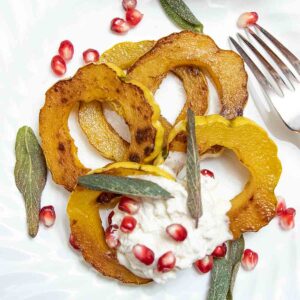
Fried Sage
Ingredients
- 1 bunch sage
- 1/2 cup oil The amount needed will vary with pan size
- 1 teaspoon salt coarse grain
Instructions
- In a small frying pan or saucepan, pour about a ¼ inch layer of oil. You may need more or less oil depending on the pan size. Heat to about 350 F. I usually check that it’s hot by touching a piece of sage stem to the oil to make sure it sizzles.
- Remove sage leaves from the stems and drop a few at a time into the oil. Remove when the sage is just crispy but not browned. I find that the point where it just stops sizzling is the time to remove it. I think it’s kind of like waiting for the popcorn to stop popping!
- Set on a paper towel to absorb excess oil. Sprinkle with flaky salt if desired. Cool before using.

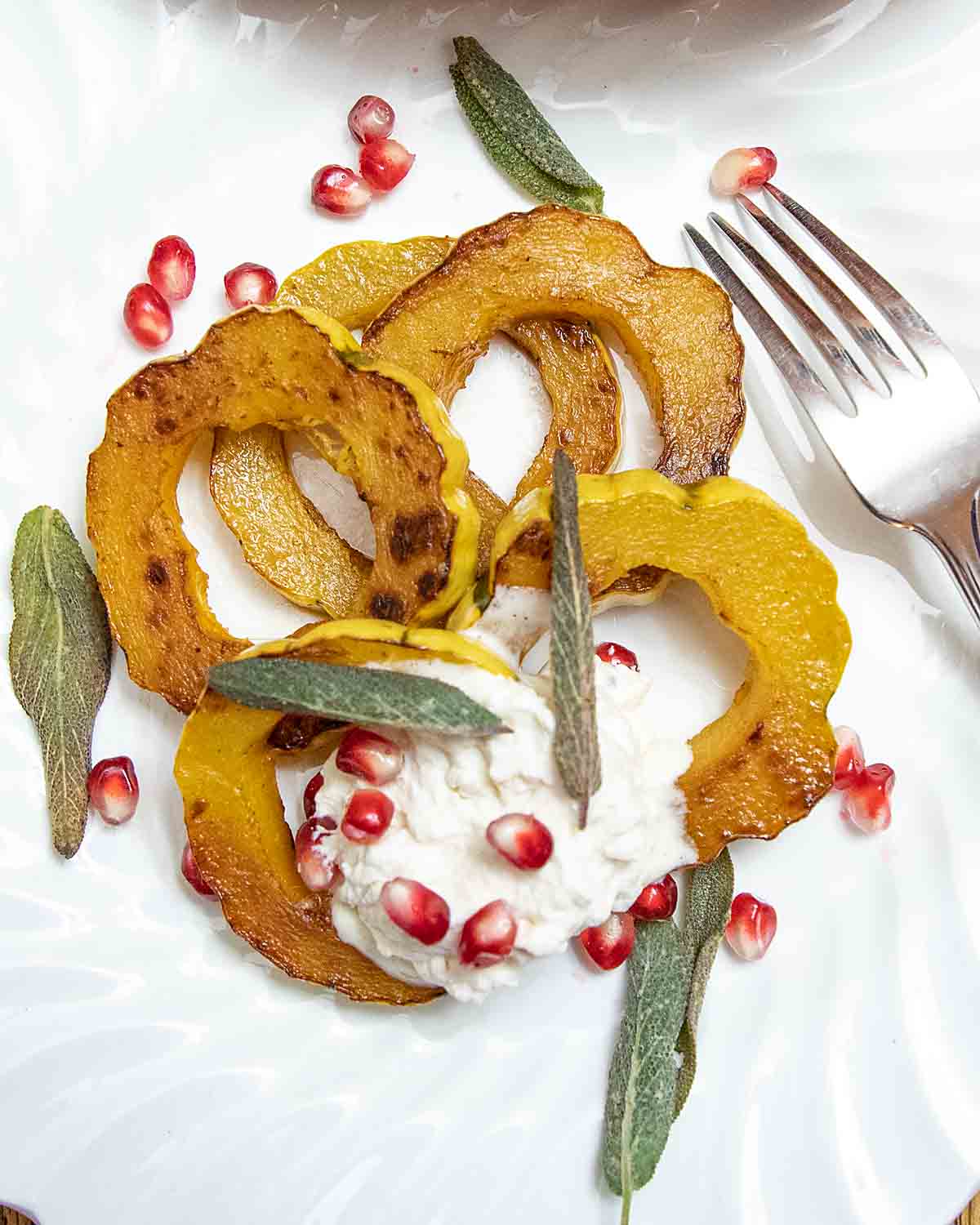
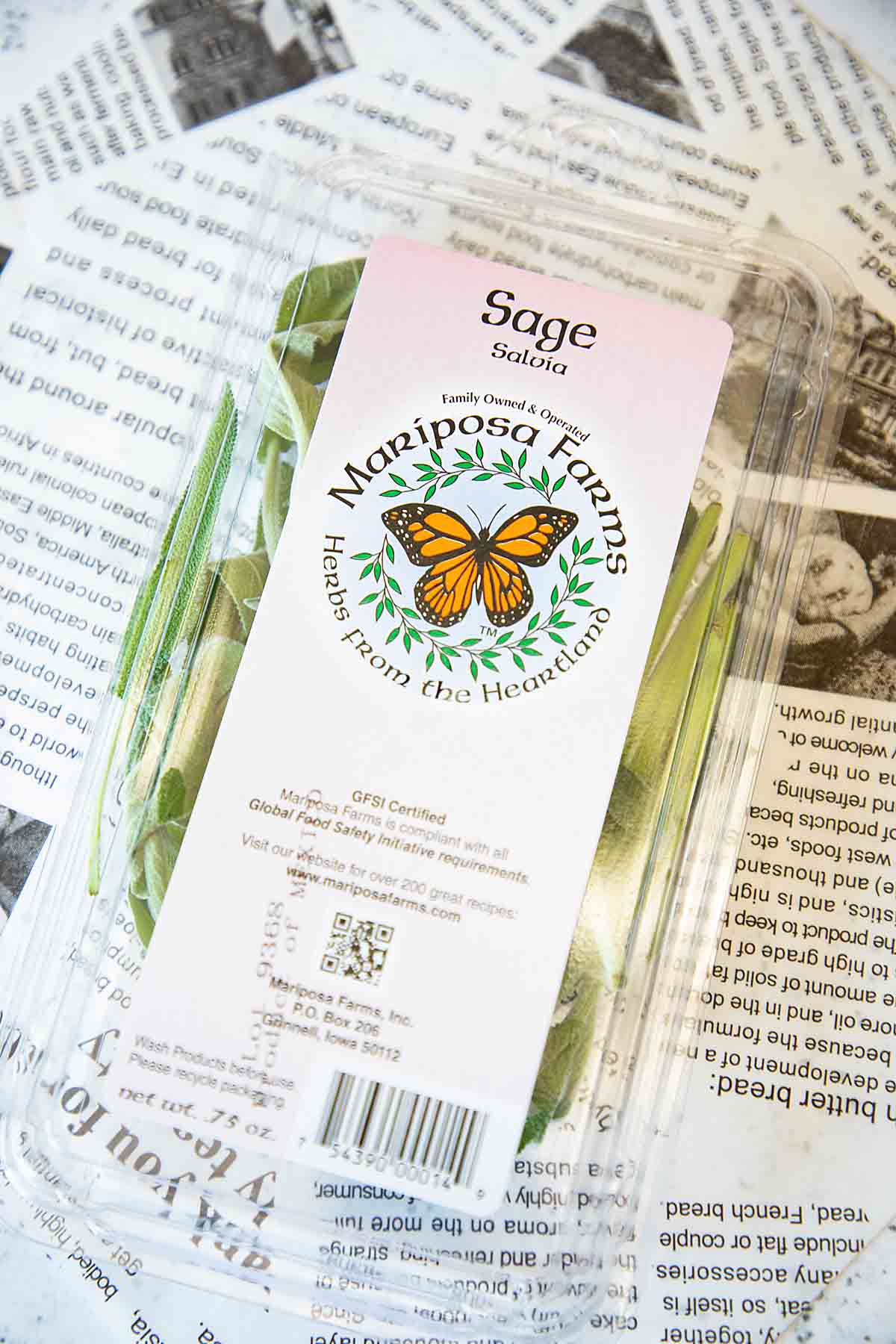
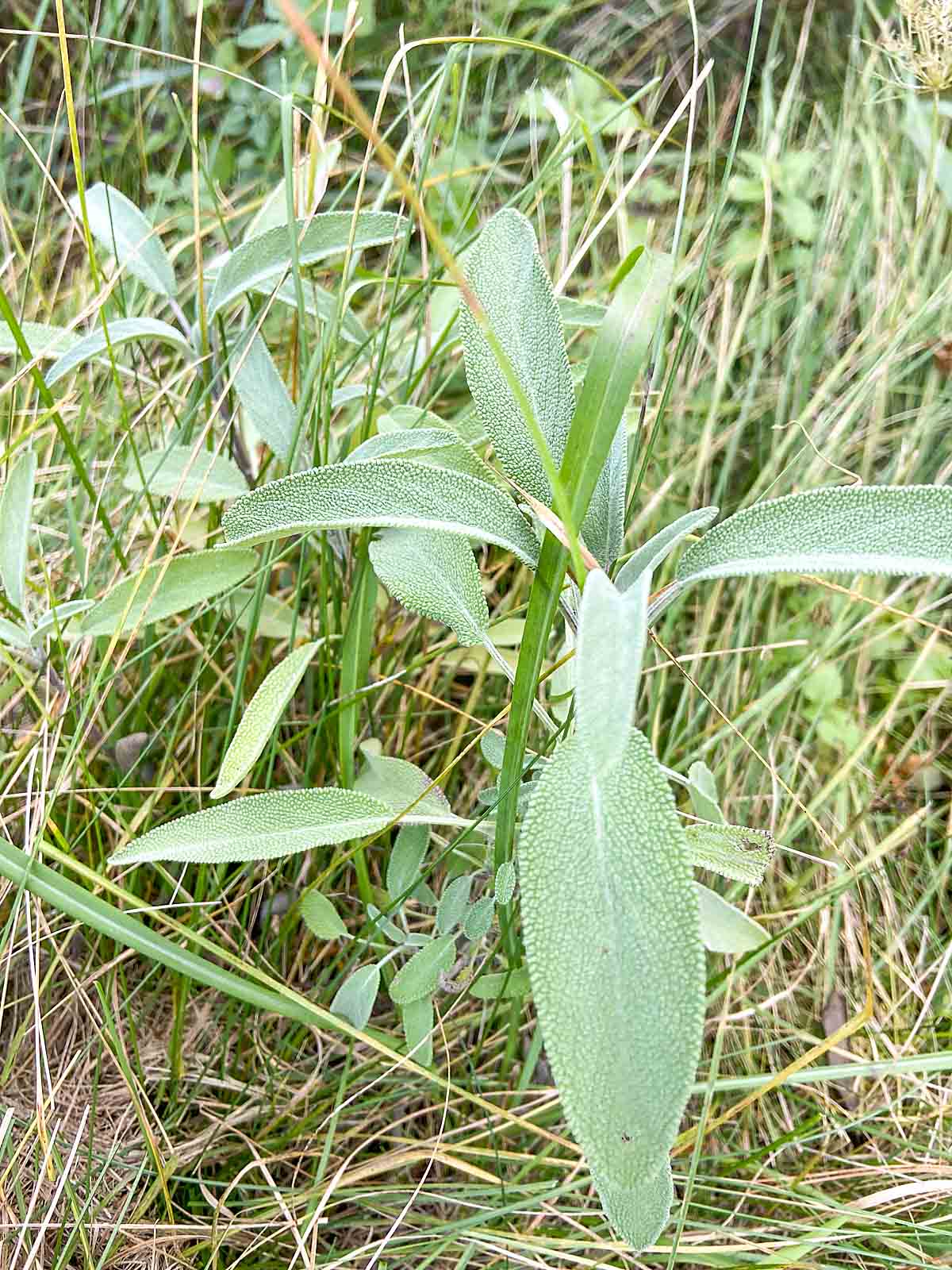
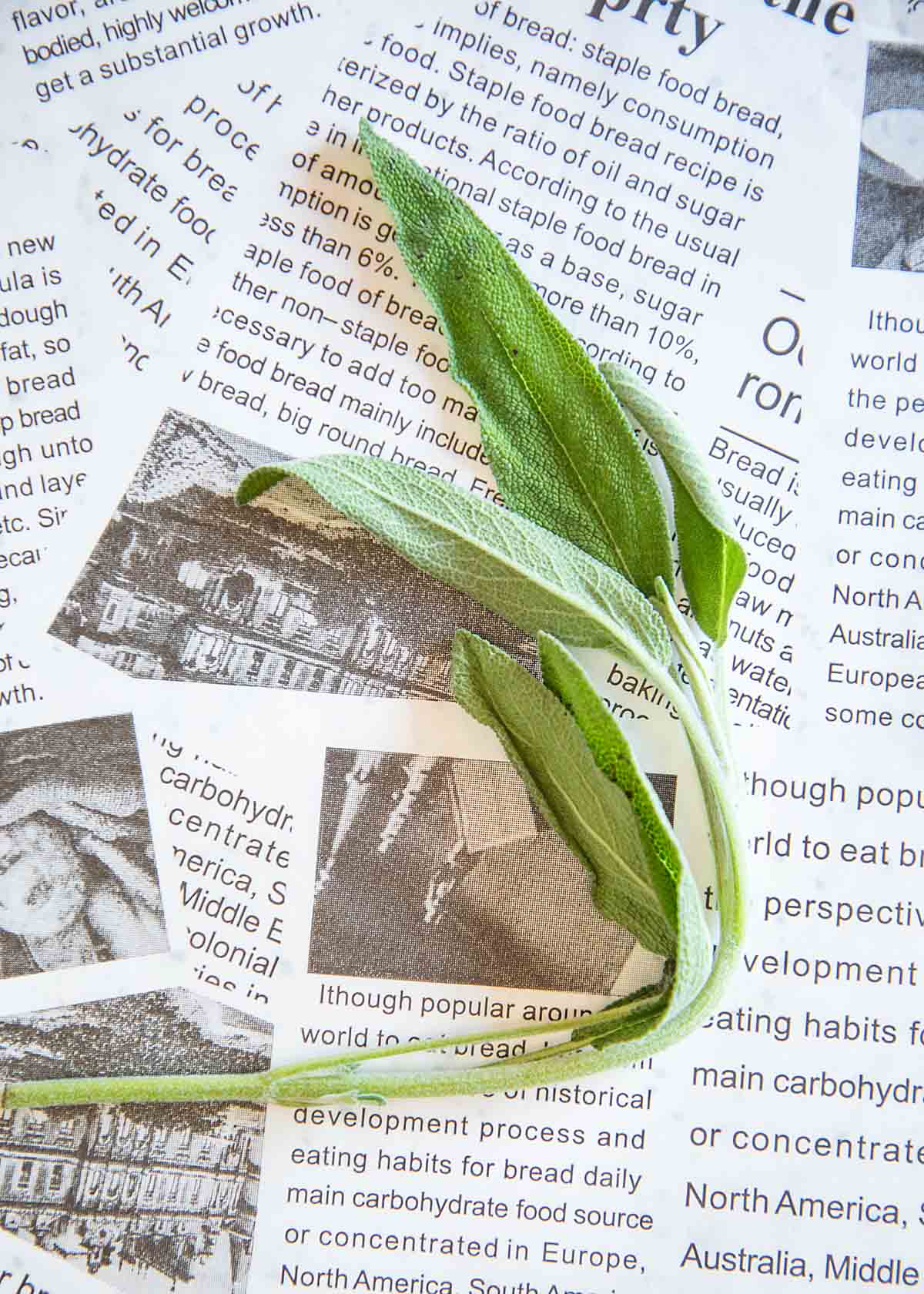
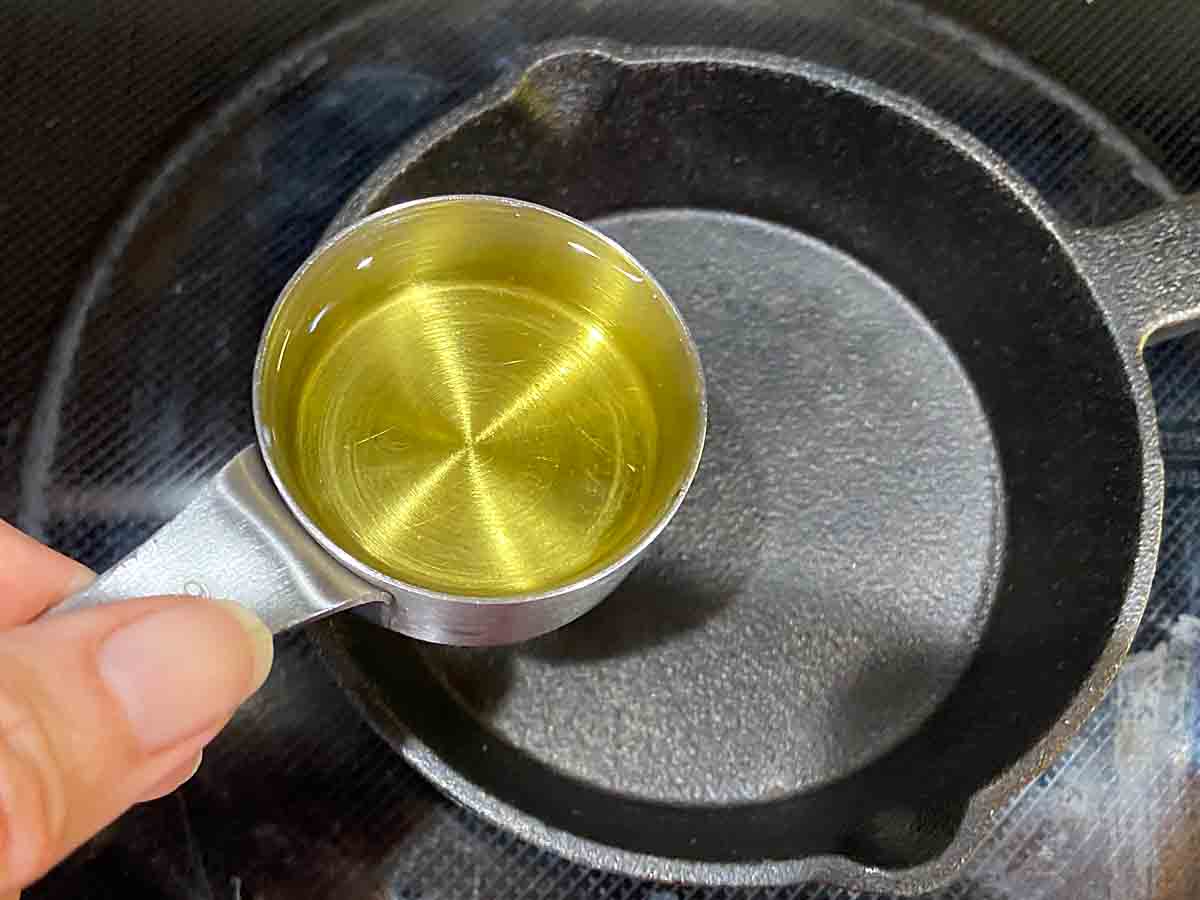

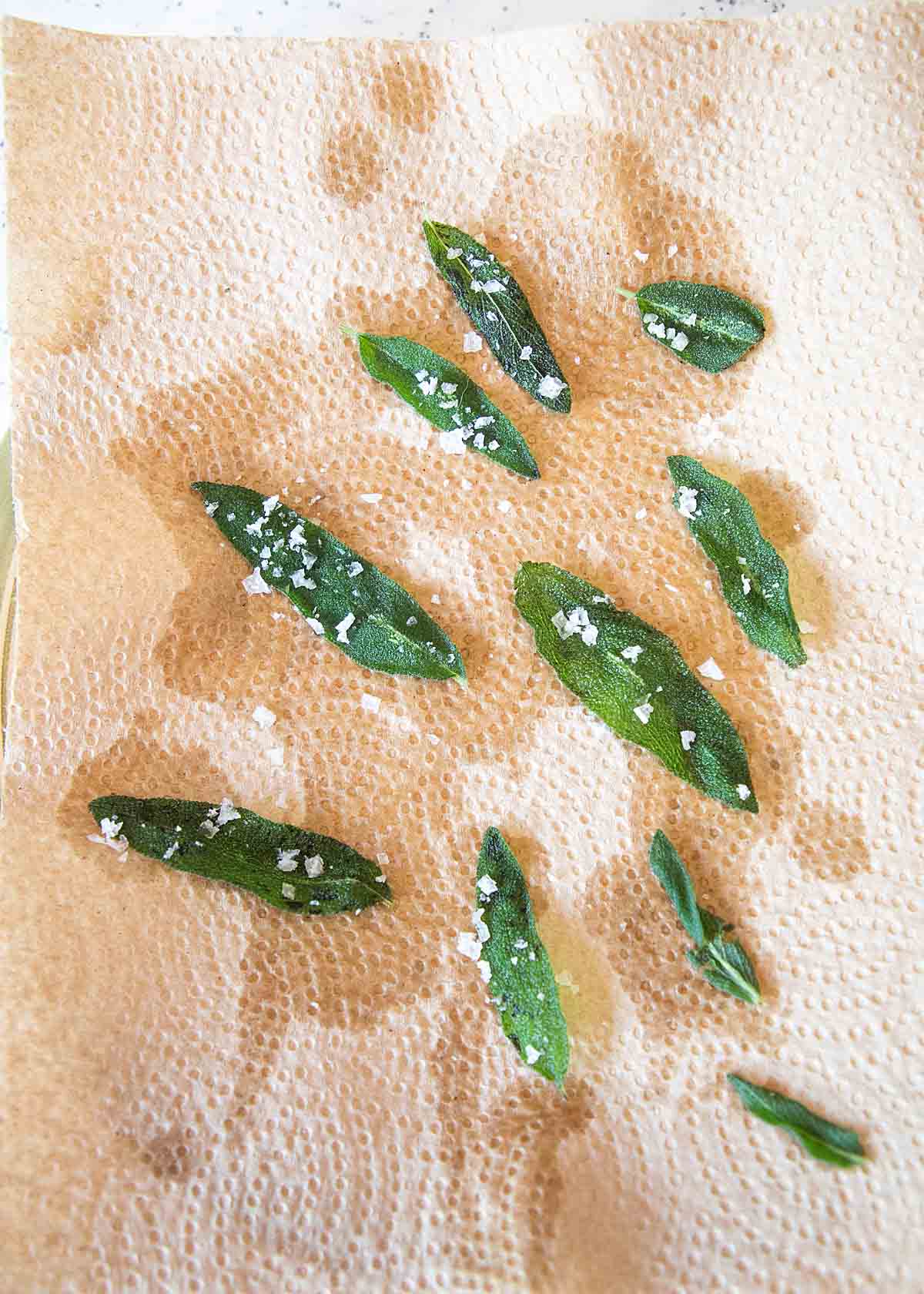

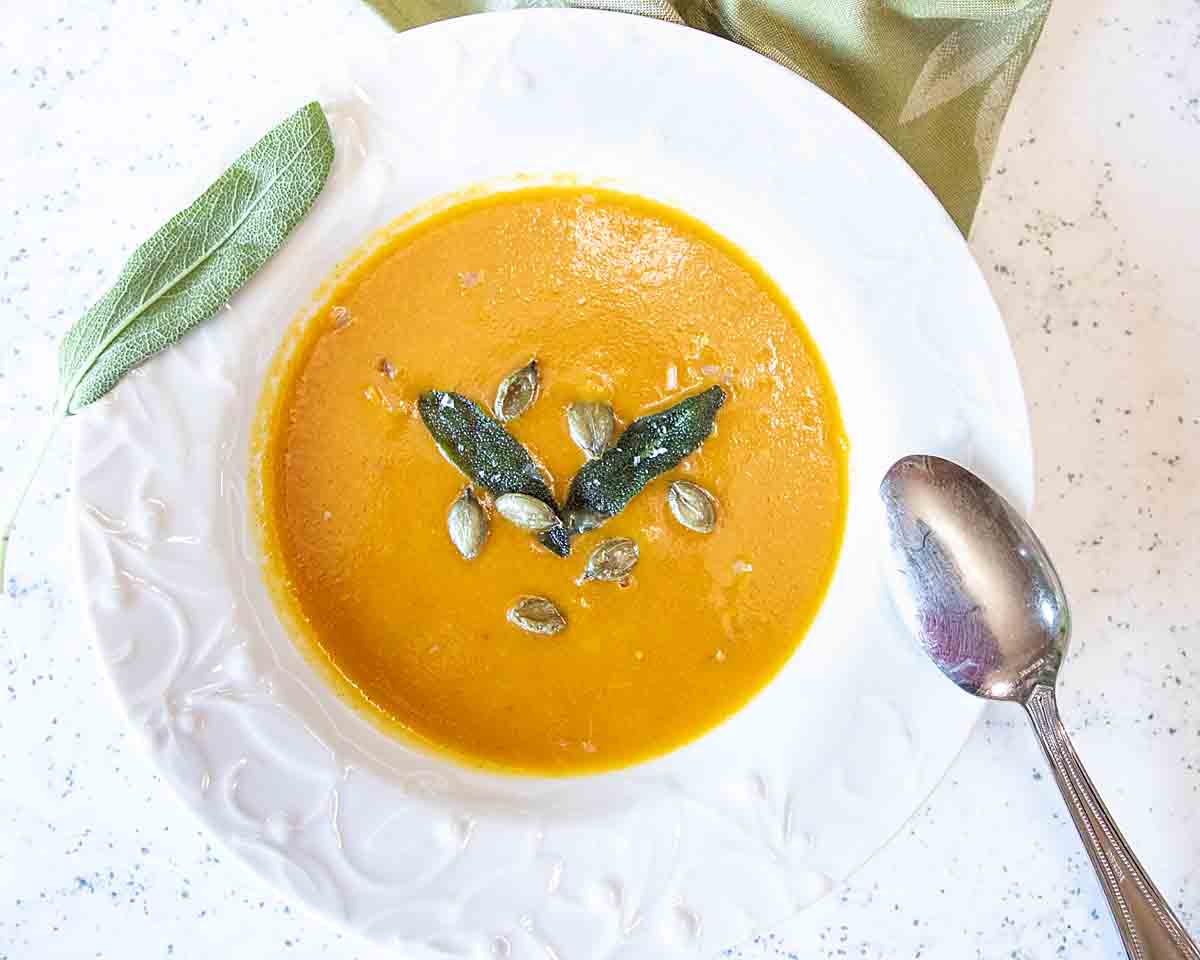


Fried sage sounds like a wonderful garnish that adds both visual appeal and a burst of flavor to various dishes. I can imagine how the crispy and aromatic sage leaves would enhance the taste and presentation of soups, vegetables, and other culinary creations.
Such a great way to dress up any dish!!
Fried sage is the perfect garnish for some many recipes! Salads, pastas, meats, fish. You name it! I can’t wait to make some for my next pasta dish.
Fried sage leaves are one of our favorite garnishes for many dishes, especially ones with heady cheese. I don’t know if you’ve heard of it, but there’s a recipe for stuffed fried sage leaves. You make a paste of anchovy paste and flour and spread it on leaf, sandwiching it with another. Then you dip them into a simple batter and fry them. To die for!
You are so on trend! What a great flavor enhancer.
This is awesome! Crispy herb as a garnish on soup will be an elevated meal. I am loving this idea.
You get lot of bang for your buck with this simple garnish for sure!
I don’t know that I’ve ever had fried sage but it would be great on several of my pasta dishes.
I’ll bet it would!